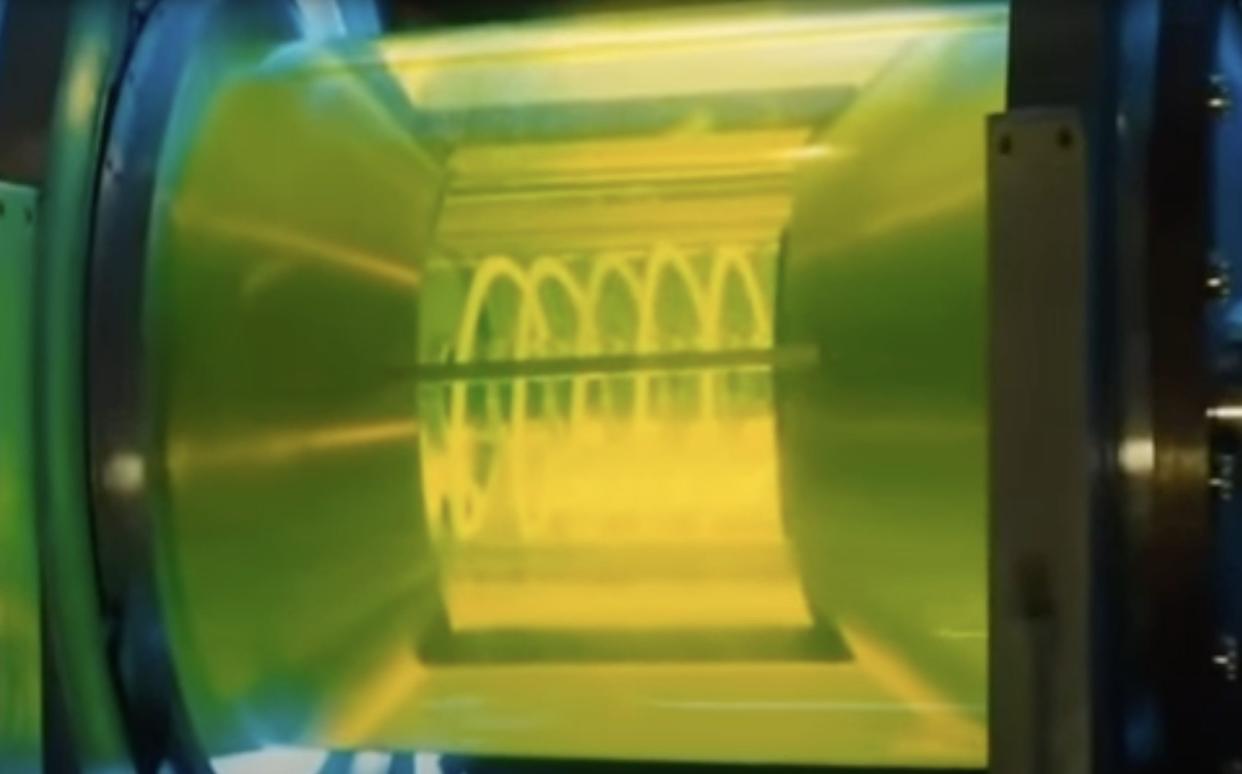British troops to test Ocean’s Eleven-style electromagnetic weapon for first time

An Ocean’s Eleven-style EMP that uses radio waves to disrupt electronics and fry circuit boards is to be tested by British troops for the first time.
The electromagnetic pulse technology is a staple of action heist films and has been in development by military scientists since the 1980s, but is now one step closer to the battlefield.
The RF DEW (Radio Frequency Directed Energy Weapon) is to be given to the 7th Air Defence Group this summer for testing as part of plans to improve the targeting of drones.
The weapon is mounted to a MAN Support Vehicle and works by emitting high-powered radio waves to disrupt electrics.
Matt Cork, the programme manager at the Defence Science and Technology Laboratory (DSTL)at Porton Down, said: “The idea is it generates a pulse, an electromagnetic pulse (EMP), which couples with electronic circuits, overloads them and switches things off. It causes electrical circuits to stop working. We can use this in a non-lethal way.”
Learning from today’s conflicts
The programme, codenamed Project Ealing, will be the first time the Ministry of Defence has conducted “user experimentation” of electromagnetic pulse technology.
“We are looking at it for multiple different activities,” Mr Cork said. “For example, could it protect an area, could it protect a moving convoy from drones with explosives on, which are a real threat.
“We are looking at what is coming out of current conflicts and trying to understand if this would have utility there.”
The range of the weapon and the wavelengths it operates at are classified but it has been made from commercially available technology which was created by a US company called Teledyne E2V to kill the outboard motors on boats.
“I can be very precise if I choose to be, or I can cycle through a whole host of frequencies depending on what I want to do,” said Mr Cork.
“We have designed this to have a mode with a narrow beam for single targets and I can then open that beam up to target a swarm. Because of the advent of drone threats we are exploring RF’s utility.”
The technology has the potential to kill all electronics in a small area, like in the fictitious Las Vegas scenario of Ocean’s Eleven, but in reality the technology will probably be used as a tool to take down incoming attacks or to hit specific targets.
EMP to be assessed alongside DragonFire laser
7th Air Defence will get the EMP technology in the summer, and will also receive the DragonFire laser in September. The experts in this group will assess the capabilities of the two different technologies separately, and provide feedback on flaws and possible improvements.
The RF DEW weapon, Mr Cork said, uses the same fundamental technology as a microwave oven or radar, which is long wavelength radio waves. “All I am doing is turning that all the way up to 11,” he said.
“RF doesn’t always destroy, but it will degrade or disrupt. We are trying to operate without always having to break everything.
“The laser [of DragonFire] is a surface effect and generates enough heat to burn and keep burning as long as you can keep the laser on it. With RF it is more about penetrating a box of electronics and coupling to the electronic circuit. It is a completely different kill mechanism.”
The technology will have a similar, but more devastating, effect on enemy drones as the jammers now used on the battlefield. Instead of temporarily rendering a drone ineffective, the EMP is a more permanent option, the DSTL scientist said.
“Jamming only works while it is on, the thing recovers when you turn it off. This is more like a sledgehammer. The effect is more in the permanent space.”
Grant Shapps, the Defence Secretary, said: “We have never seen a war fought in the radio waves as much as Ukraine – jamming of the radio waves, jamming of GPS, the ability to conduct electronic warfare. The most electronically warfared space in the world is over Ukraine.
“I think that things like radio weapons will have a very large part to play in future conflicts.”


